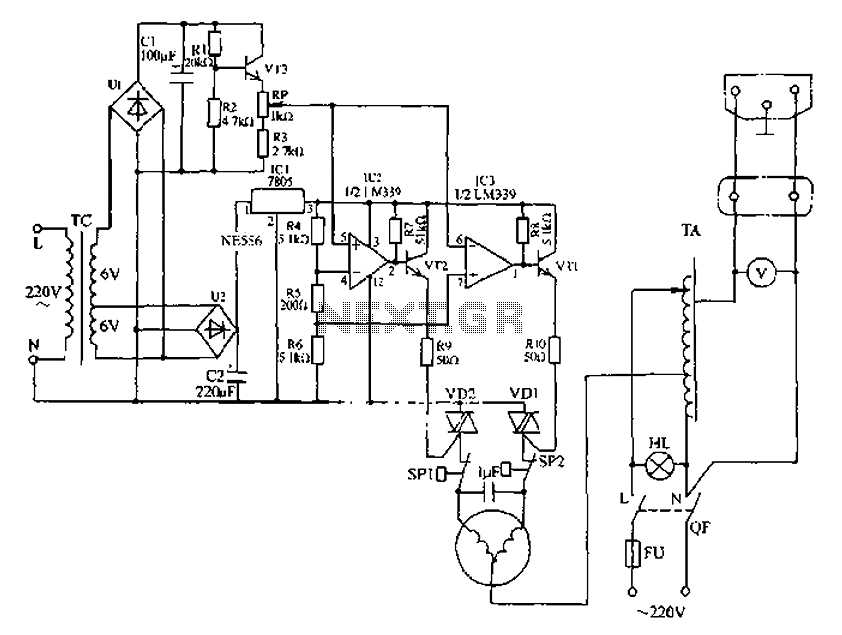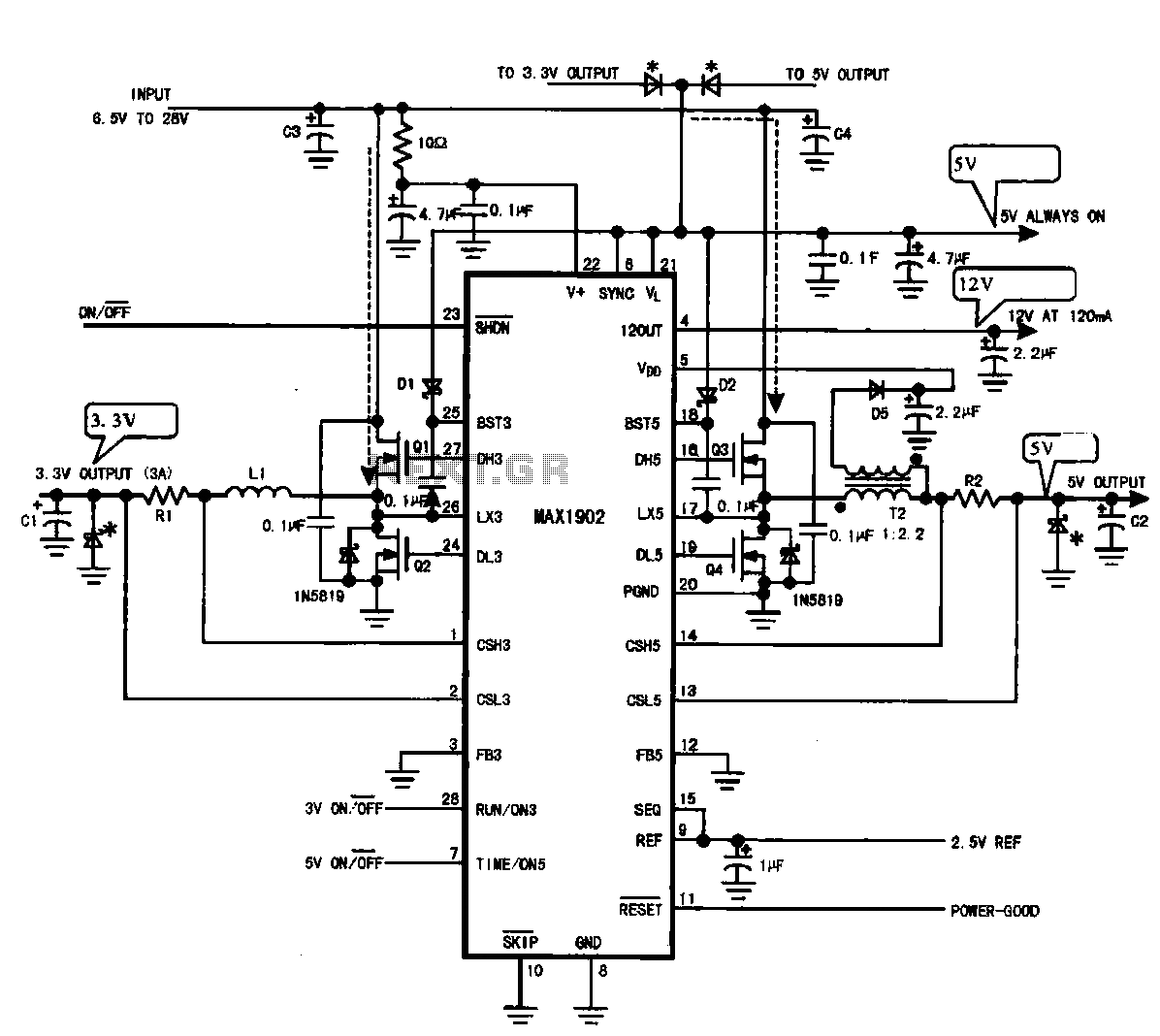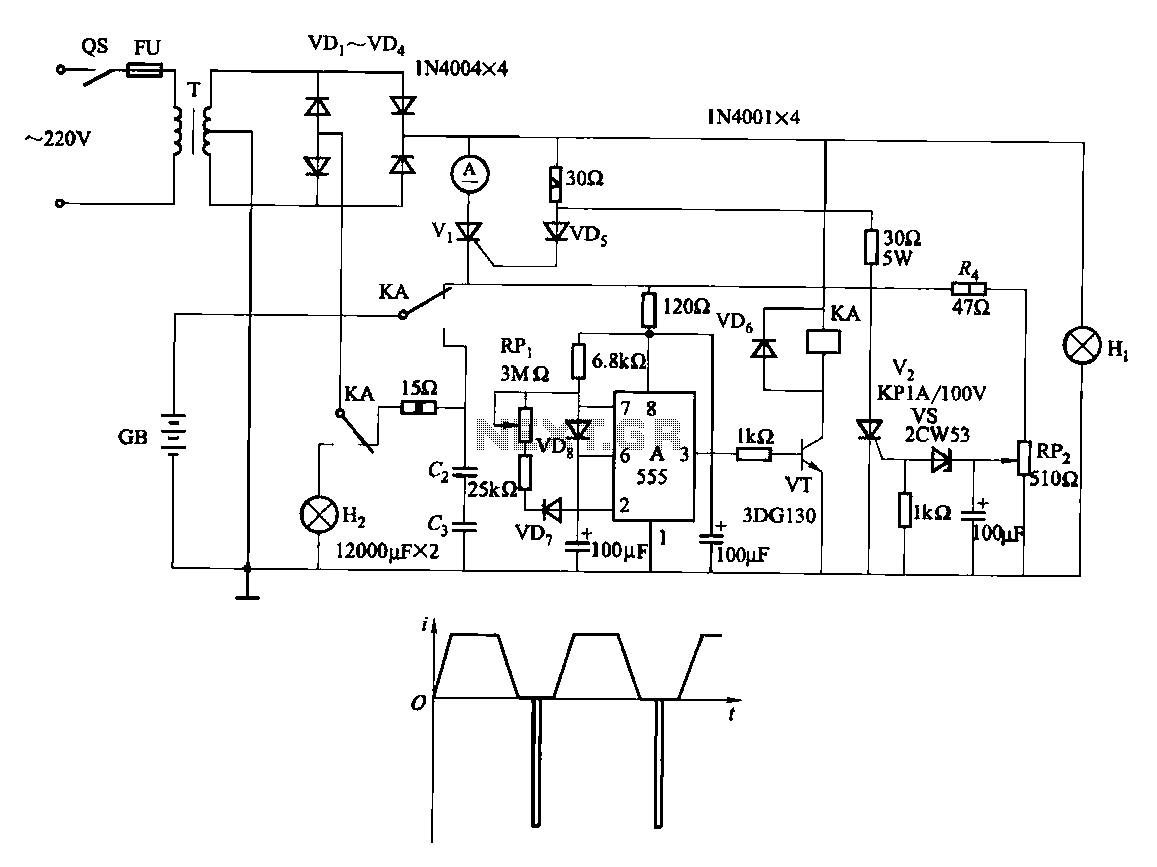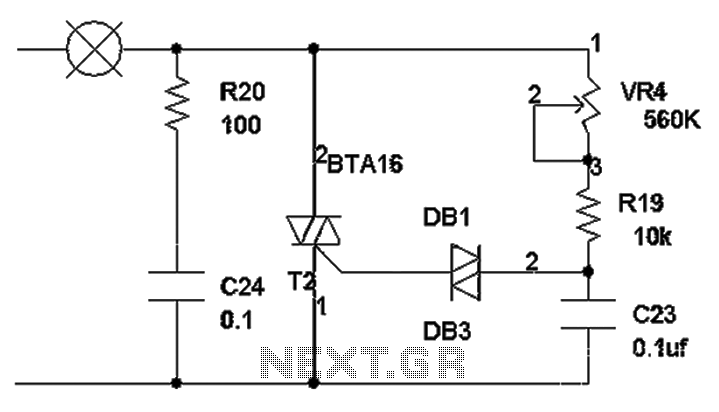
Massage digital display circuit
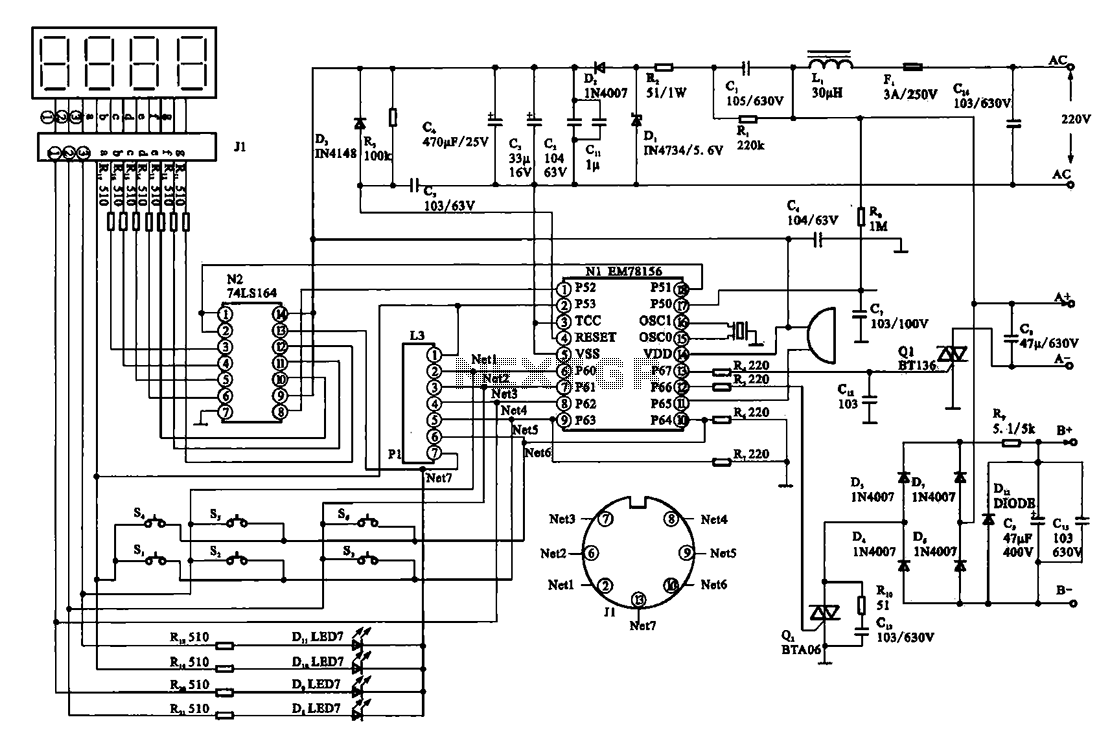
The display circuit is utilized in a typical digital massager. At the heart of the control circuit is the microprocessor EM78156, which receives manual operation instructions. It triggers two transistors to supply voltage to the DC motor (A +, A- and B +, B-), with displacement managed through an 8-bit register N2 for the digital display drive circuit.
The display circuit in a digital massager operates by integrating a microprocessor, specifically the EM78156, which serves as the central control unit. This microprocessor is responsible for interpreting user inputs and executing control commands for the device's various functions. The manual operation instructions are processed by the EM78156, which activates two transistors that control the power supplied to the DC motor. The motor is essential for the massager's operation, providing the necessary mechanical movement.
The power supply to the motor is divided into two sets of terminals: A +, A- for one motor direction, and B +, B- for the opposite direction. This dual control allows for bidirectional movement, enhancing the massaging capability of the device. The transistors act as electronic switches, enabling or disabling the motor supply voltage based on the processed instructions from the microprocessor.
Additionally, the circuit incorporates an 8-bit register, denoted as N2, which plays a crucial role in driving the digital display. This register holds the data that corresponds to the operational status and settings of the massager, allowing for dynamic visual feedback to the user. The digital display presents various information, such as speed settings, massage modes, or operational timers, thereby improving user interaction and experience.
Overall, the integration of the EM78156 microprocessor, the transistor-driven motor control, and the 8-bit register for the display forms a cohesive and efficient electronic circuit that enhances the functionality of a digital massager.Display circuit as shown in a typical digital massager. The core of the control circuit is a microprocessor EM78156, it then received instructions manual operation of the circu it, on the one hand by triggering the two transistors to provide a DC motor supply voltage (A +, A- and B +, B-), with displacement through 8 bit register N2 digital display drive circuit.
The display circuit in a digital massager operates by integrating a microprocessor, specifically the EM78156, which serves as the central control unit. This microprocessor is responsible for interpreting user inputs and executing control commands for the device's various functions. The manual operation instructions are processed by the EM78156, which activates two transistors that control the power supplied to the DC motor. The motor is essential for the massager's operation, providing the necessary mechanical movement.
The power supply to the motor is divided into two sets of terminals: A +, A- for one motor direction, and B +, B- for the opposite direction. This dual control allows for bidirectional movement, enhancing the massaging capability of the device. The transistors act as electronic switches, enabling or disabling the motor supply voltage based on the processed instructions from the microprocessor.
Additionally, the circuit incorporates an 8-bit register, denoted as N2, which plays a crucial role in driving the digital display. This register holds the data that corresponds to the operational status and settings of the massager, allowing for dynamic visual feedback to the user. The digital display presents various information, such as speed settings, massage modes, or operational timers, thereby improving user interaction and experience.
Overall, the integration of the EM78156 microprocessor, the transistor-driven motor control, and the 8-bit register for the display forms a cohesive and efficient electronic circuit that enhances the functionality of a digital massager.Display circuit as shown in a typical digital massager. The core of the control circuit is a microprocessor EM78156, it then received instructions manual operation of the circu it, on the one hand by triggering the two transistors to provide a DC motor supply voltage (A +, A- and B +, B-), with displacement through 8 bit register N2 digital display drive circuit.
